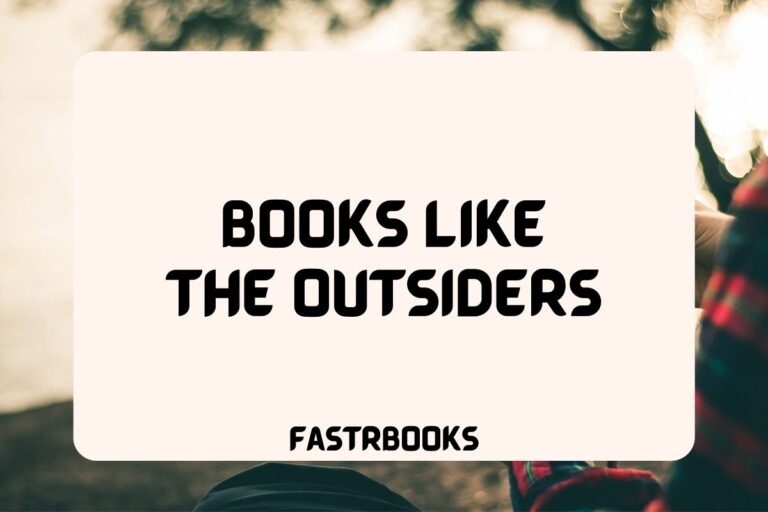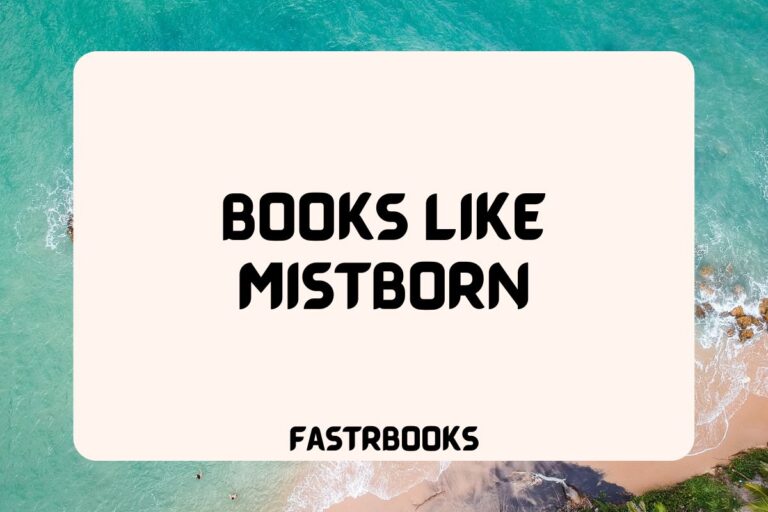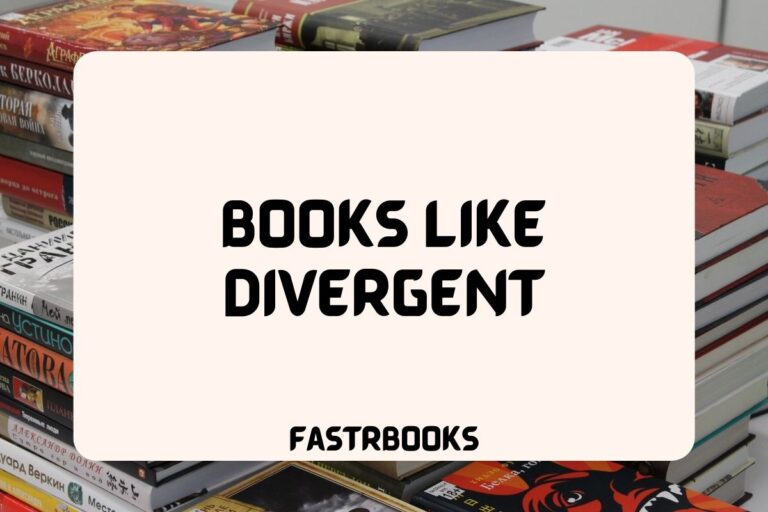10 Books Like He Who Fights with Monsters

Calling all monster slayers, underdogs, and fans of epic battles!
Did “He Who Fights with Monsters” leave you hungry for more adrenaline-pumping action and captivating world-building?
This post is your guide to a treasure trove of books that will satisfy your craving for fantastical adventures.
So, grab your trusty weapon (or comfy reading nook), and prepare to embark on a journey through captivating tales filled with magic, monsters, and heroes who rise above their limitations.
Let’s explore some gems that share the spirit of “He Who Fights with Monsters”!
Books Like He Who Fights with Monsters
1. The Cradle Series by Will Wight
The Cradle Series begins with “Unsouled,” where we meet Lindon, a young man deemed without any magical abilities in a world where such powers define one’s future.
Despite his apparent lack of talent, Lindon refuses to accept his fate and embarks on an extraordinary journey to discover his true potential. The series is renowned for its detailed magic system, fast-paced action, and deep character development.
Major Similarities:
Like “He Who Fights with Monsters,” The Cradle Series thrives on a detailed and unique magic system that plays a central role in the story.
Both protagonists start from humble beginnings and are driven by a strong determination to improve themselves and defy the odds. The series also shares a focus on progression, both in terms of character development and the mastery of magical abilities, making it a perfect match for readers who enjoy stories about personal growth and adventure in a fantasy setting.
2. The Licanius Trilogy by James Islington
The first book, “The Shadow of What Was Lost,” introduces readers to a world where magic is both a gift and a curse, and the shadow of a past war looms large. The story follows young protagonists who must navigate complex political landscapes, ancient prophecies, and their own mysterious powers to prevent another disaster.
This epic fantasy is marked by its intricate plot, moral complexity, and the deep historical backdrop of its world.
Major Similarities:
“The Licanius Trilogy” and “He Who Fights with Monsters” share a penchant for complex world-building and morally grey characters. Both series involve young protagonists who uncover hidden powers within themselves, set against a backdrop of looming threats and ancient mysteries.
The themes of destiny versus choice and the exploration of the consequences of power resonate in both narratives.
3. The Mage Errant Series by John Bierce
Starting with “Into the Labyrinth,” this series tells the tale of Hugh of Emblin, an underdog with seemingly insignificant magical abilities at a prestigious magical academy.
Hugh discovers hidden depths to his powers and embarks on dangerous adventures with a group of misfit friends. The series is celebrated for its character-driven narrative, innovative magic system, and themes of friendship and self-discovery.
Major Similarities:
Both “He Who Fights with Monsters” and “The Mage Errant Series” focus on characters who initially seem weak or underestimated by their peers but gradually reveal extraordinary talents.
The importance of friendship and alliances is a recurring theme in both series, as is the exploration of a complex and well-thought-out magic system that significantly impacts the characters’ growth and the plot’s development.
4. The Spellslinger Series by Sebastien de Castell
“Spellslinger” is the first book in a series that follows Kellen, a young spellcaster who struggles with his dwindling magical abilities in a society where magic is everything.
As Kellen faces exile, he encounters a mysterious wanderer who teaches him that there’s more to life and magic than the strict rules of his people. The series is known for its witty dialogue, fast-paced action, and exploration of themes such as identity and belonging.
Major Similarities:
Like “He Who Fights with Monsters,” “The Spellslinger Series” features a protagonist grappling with societal expectations and limitations.
Both series excel in developing a richly detailed magical world where the characters must navigate through political intrigue, personal growth, and moral dilemmas. The theme of discovering one’s path and challenging established norms is central to both stories.
5. The Lightbringer Series by Brent Weeks
“The Black Prism,” the first book of The Lightbringer Series, introduces a world where magic is derived from light and color, governed by the Prism, the most powerful person in the world.
The story centers on Kip, a seemingly ordinary boy who discovers he has a great destiny that intertwines with the fate of the world. The series is acclaimed for its complex magic system, epic scope, and deep exploration of themes like power, corruption, and redemption.
Major Similarities:
Both “He Who Fights with Monsters” and “The Lightbringer Series” offer readers a unique and thoroughly developed magic system integral to the plot and character development.
Themes of unexpected destiny, the burdens of power, and the fight against corruption link the two. Additionally, both series feature protagonists who rise from obscurity to play pivotal roles in their world’s fate, driven by a blend of personal growth and the challenge of mastering their newfound abilities.
6. The King’s Dark Tidings Series by Kel Kade
Starting with “Free the Darkness,” this series introduces Rezkin, a young man trained from birth to be a lethal warrior and protector, with no knowledge of his origins or the wider world. Upon the death of his mentor, he sets out to find his purpose, guided only by cryptic instructions.
Along the way, he gathers a group of loyal friends and uncovers truths about himself and the complex world around him. The series is known for its fast-paced action, deep lore, and the mysterious past of its protagonist.
Major Similarities:
Similar to “He Who Fights with Monsters,” “The King’s Dark Tidings Series” features a protagonist with a mysterious background and extraordinary abilities.
Both series delve into themes of self-discovery, the journey to understand one’s place in a complex world, and the formation of deep bonds with a diverse group of characters. The emphasis on a protagonist who defies expectations and norms to carve out their own path resonates in both narratives.
7. The Codex Alera Series by Jim Butcher
“The Furies of Calderon” kicks off this series, set in a world where humans bond with elemental spirits known as Furies. We follow Tavi, a boy seemingly without any fury to call his own, in a realm where such a bond is crucial.
Tavi’s lack of magical ability doesn’t stop him from embarking on a journey that will test his resolve, intelligence, and heart. This series blends high-stakes political intrigue with epic battles and deep character development.
Major Similarities:
Like “He Who Fights with Monsters,” “The Codex Alera Series” revolves around a protagonist who initially appears to be at a disadvantage due to the absence of magic in a world where such power is fundamental.
Both series showcase themes of perseverance, the importance of wit and strategy over brute force, and the journey toward greatness against all odds.
The detailed world-building and intricate magic system provide a rich backdrop for the characters’ adventures and growth.
8. The Traveler’s Gate Trilogy by Will Wight
Starting with “House of Blades,” this series introduces Simon, a boy from a village attacked by outsiders. When he discovers that he doesn’t have to be chosen by destiny to wield power, Simon seeks out his own path to strength.
The trilogy is filled with unique magic systems, compelling character development, and a clear focus on the theme that heroes can come from anywhere.
Major Similarities:
“The Traveler’s Gate Trilogy” and “He Who Fights with Monsters” share the concept of protagonists discovering unconventional paths to power in worlds rich with unique magic systems.
Both Simon and the protagonist of “He Who Fights with Monsters” are characters who take their destinies into their own hands, challenging the status quo and growing significantly along their journeys. The series also highlights the value of determination, friendship, and the exploration of moral complexities in a changing world.
9. The Stormlight Archive by Brandon Sanderson
“The Way of Kings” is the first book in this epic series, set in the world of Roshar, a land of fierce storms and ancient ruins.
The series follows multiple characters from diverse backgrounds, including Kaladin, who evolves from a disillusioned soldier to a leader of men; Shallan, who seeks to save her family through forbidden knowledge; and Dalinar, a highprince caught in a web of visions and political intrigue.
The series is renowned for its intricate world-building, complex characters, and exploration of themes like honor, power, and redemption.
Major Similarities:
Both “The Stormlight Archive” and “He Who Fights with Monsters” are epic in scope and delve into complex, well-developed worlds with rich histories and cultures.
They share a focus on characters who grow from humble beginnings to significant figures in their worlds, facing moral dilemmas and challenges that test their beliefs and resolve. The intricate magic systems and the emphasis on personal growth and the impact of power are central themes in both series.
10. The Powder Mage Trilogy by Brian McClellan
“Promise of Blood,” the first book in the series, kicks off with a coup led by Field Marshal Tamas, aiming to overthrow the corrupt monarchy. In the aftermath, Tamas faces threats from all sides, including royalists, foreign armies, and even gods.
The series is set in a world where magic and muskets blend seamlessly, featuring characters known as Powder Mages, who can manipulate gunpowder in extraordinary ways. It combines elements of epic fantasy with political intrigue and revolutionary themes.
Major Similarities:
Similar to “He Who Fights with Monsters,” “The Powder Mage Trilogy” offers a unique take on magic and power within a revolutionary setting. Both series explore the consequences of upheaval and the fight against entrenched systems of oppression.
They feature complex characters who navigate a world of political intrigue, warfare, and the burdens of leadership. The innovative magic systems and the blend of personal ambition with greater societal issues make both series compelling for fans of fantasy that merges the personal with the epic.






